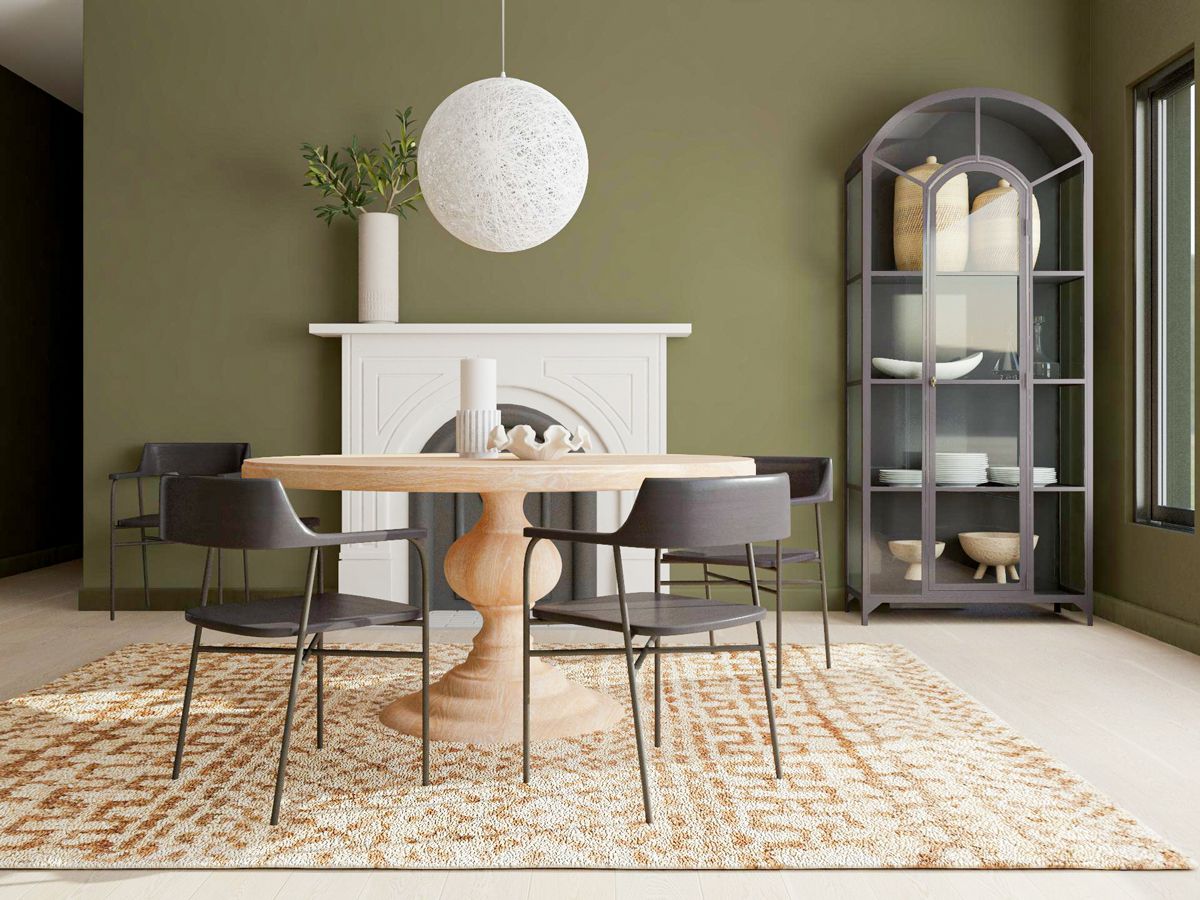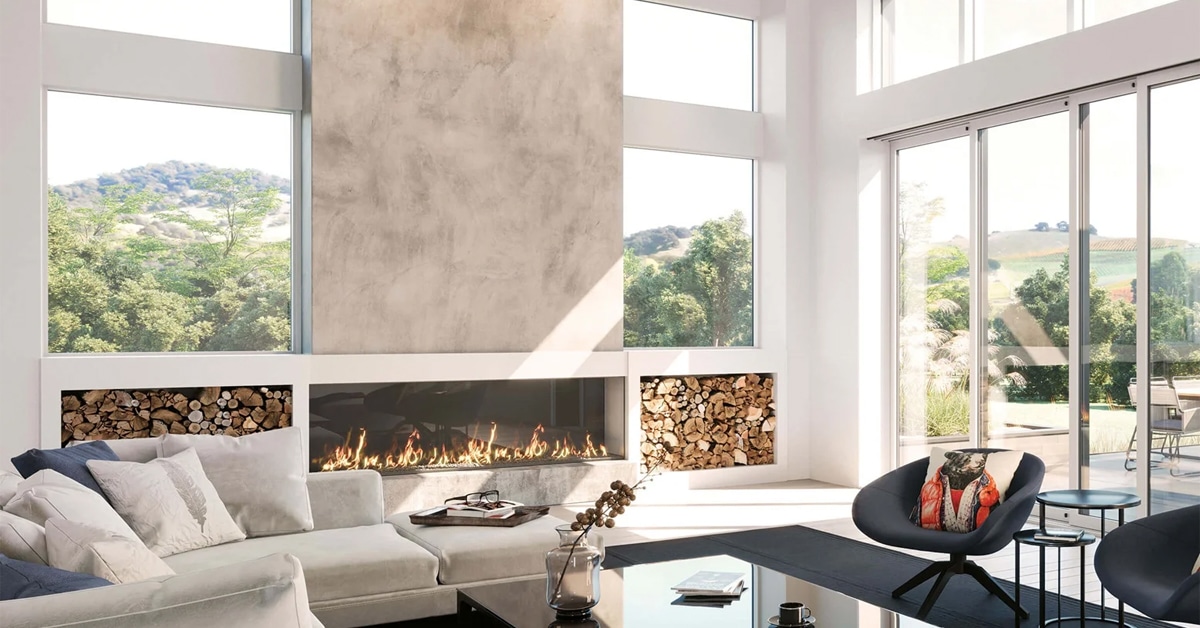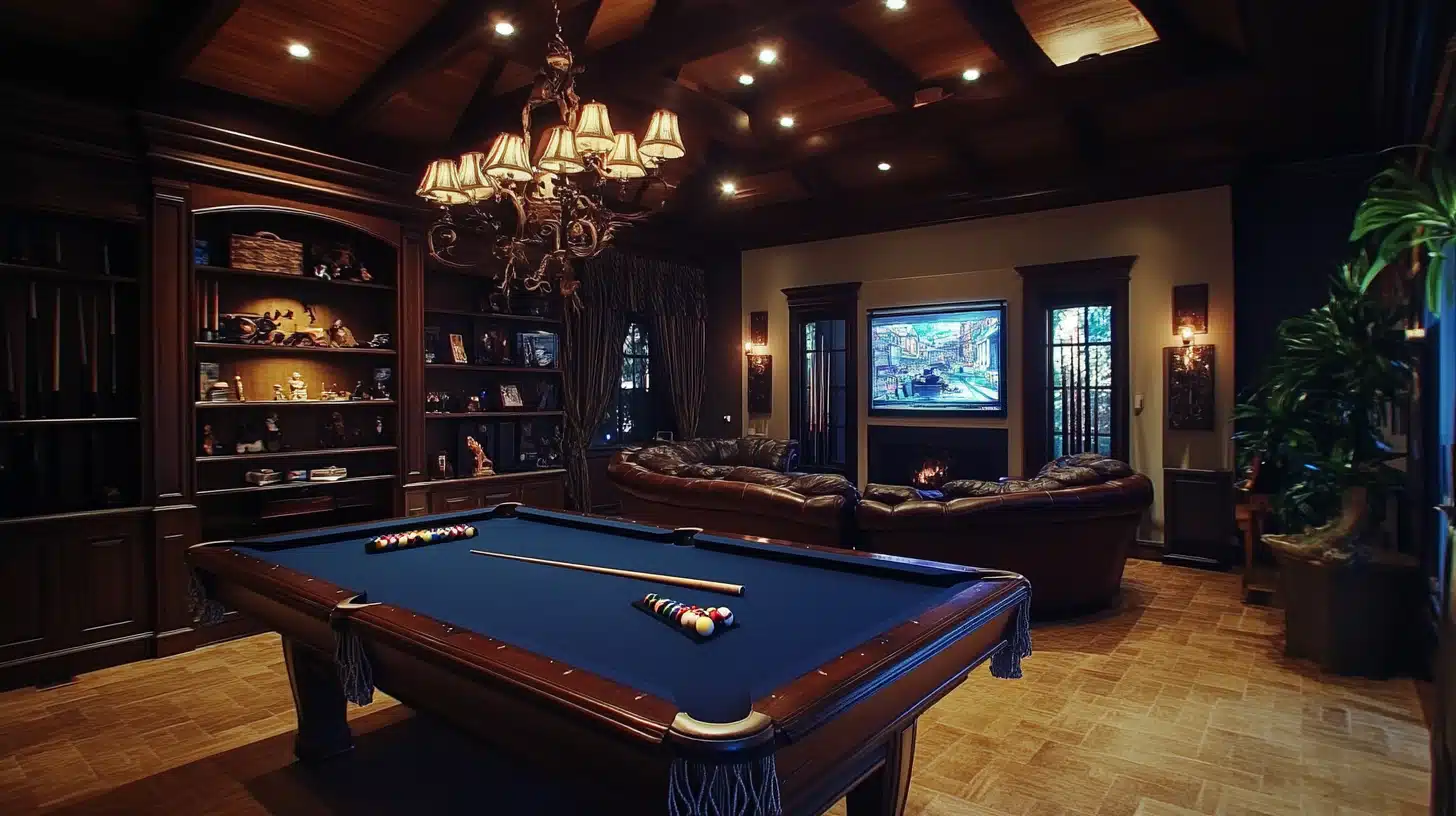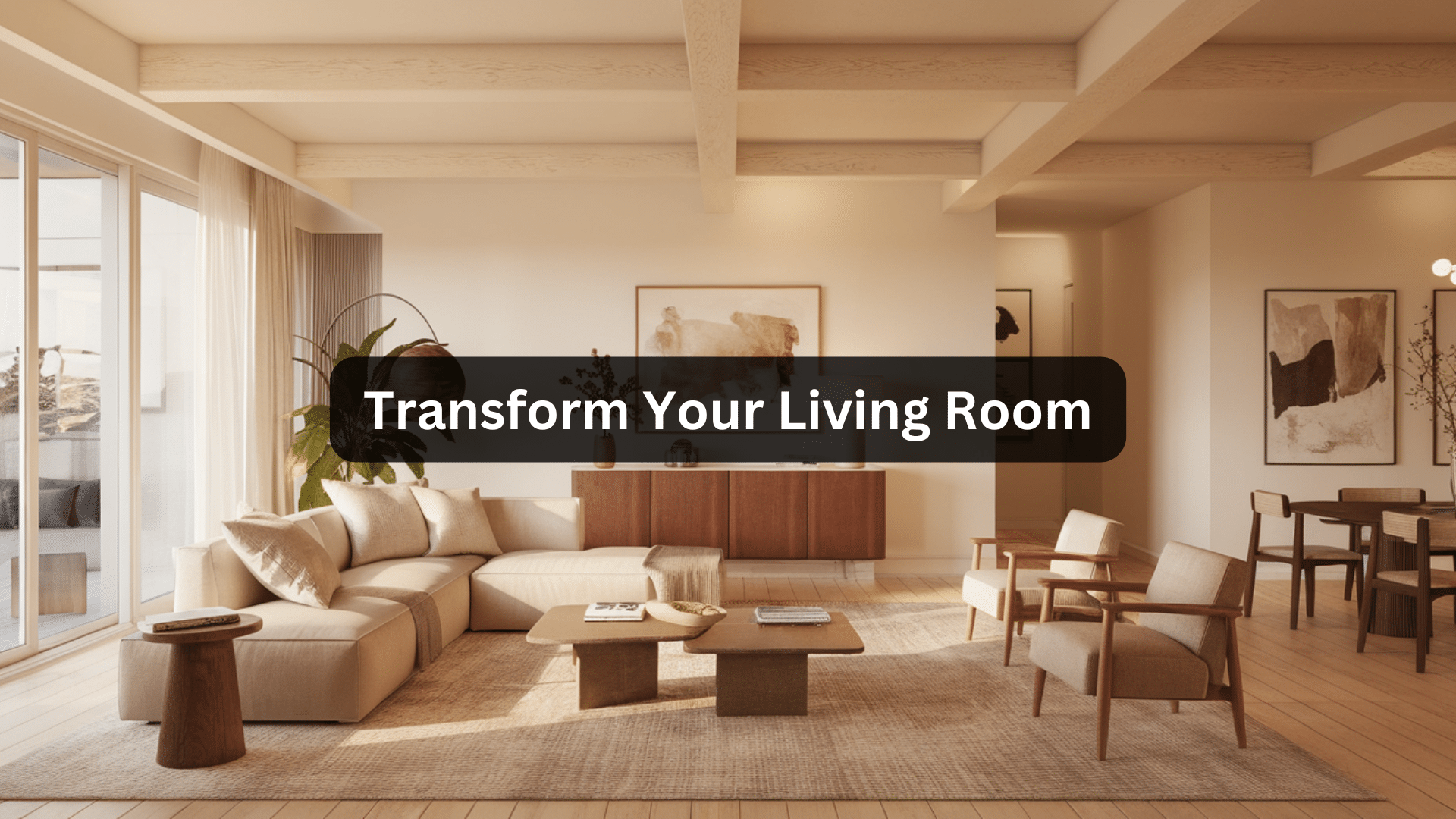What Are the Color Schemes for An Organic Modern Living Room?
Picture yourself surrounded by serenity and vibrant bursts of colors that are inspired by nature. As the boundaries blur between your organic modern living room and the outdoors, this blog will guide you to infuse life into space with colors. Whether you are drawn toward soft hues or monochromatic, your choice evokes tranquility and elegance in your living room.
Envision soft greys and subtle mustard yellows to transform the room from ordinary to extraordinary. In this blog, we will take you through the journey of stirring up colors and style, where each hue weaves a masterpiece of your space.
Grab the color wheel now to paint your sanctuary!
Choosing Color Schemes for An Organic Modern Living Room
In creating an organic modern living room, the right choice of colors plays a crucial role in evoking a sense of coziness and style. Colors influence the ambiance, mood, and overall aesthetics of the room while seamlessly blending with nature’s beauty. Neutral color palettes establish the foundation for the room’s visual identity, creating a serene backdrop in line with the organic theme. Furthermore, colors contribute to emotional well-being and kindle calmness and balance.
1. Neutral-Color Palette with a Pop of Colors
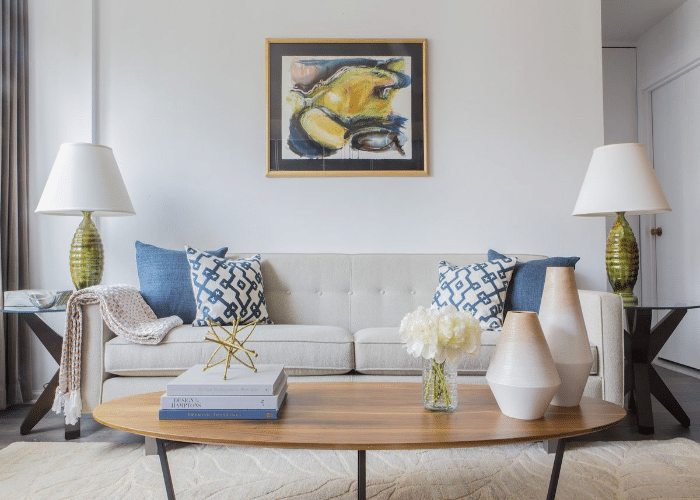
A neutral-color Palette comprising of whites, beiges, creams, and soft grays, forms a serene foundation. These colors also create a sense of openness and airiness, allowing the organic elements to shine. Inject a pop of color to the accessories like pillows, artwork, or décor items to add visual interest. These accents liven up the room without overwhelming the harmony of nature and contemporary designs.
2. Monochromes

Monochrome is the use of different variants of a single color. Selecting shades, tints and tones of the chosen color to create a cohesive and harmonious look. Monochromatic colors exude simplicity and elegance and create visual unity, making the space feel more organized and well-curated. The subtle nature of the monochromatic colors fosters a calming atmosphere while highlighting the natural elements.
3. Earth Tones
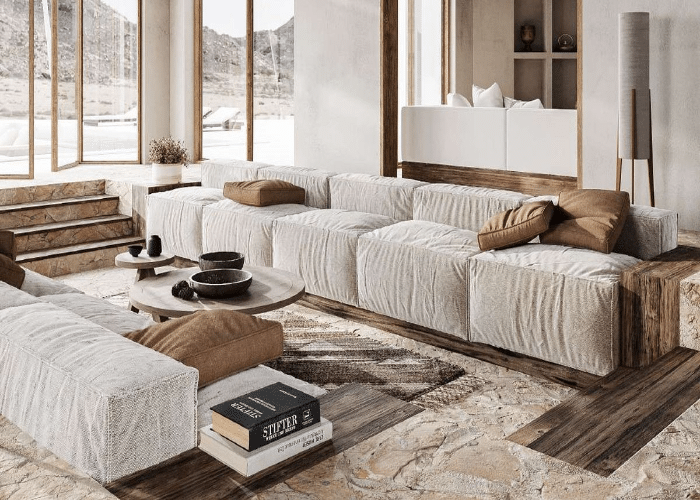
Earth Tones are colors inspired by natural elements like wood, stones, foliage, rocks, and minerals. The color palette includes browns, greens, beiges, creams, and muted reds and oranges. These colors often dominate an organic modern living room, creating a serene and inviting atmosphere. Since they are associated with calmness and comfort, by incorporating these colors, you can capture the essence of nature in the modern context.
4. Pastels

Pastels are a delightful addition to an organic modern living room; these colors infuse softness and modern charm into the room. Pastels like muted pink, blue, lavender and greens mimic natural elements and evoke a sense of calmness and sophistication. Pastels contribute to overall psychological well-being, promoting a stress-free and inviting environment. These colors establish a visually spacious and uncluttered look due to their ability to create openness and airiness within the space.
5. Bold Colors
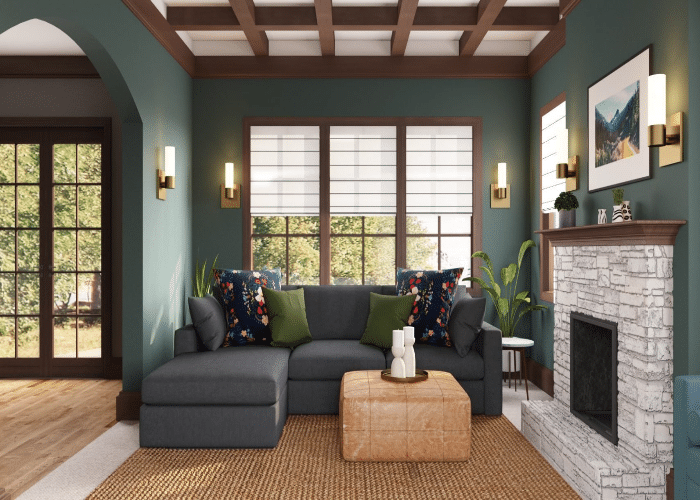
Bold colors infuse energy and vitality into the room. Bold colors act like a focal point, adding depth, contrast, and individuality to the space. Though organic modern living rooms embrace neutral colors and subdued tones, too much neutrality results in monotony. Bold colors infuse personality and character to the wall or statement furniture while complementing natural elements.
6. Cool and Calming Blues
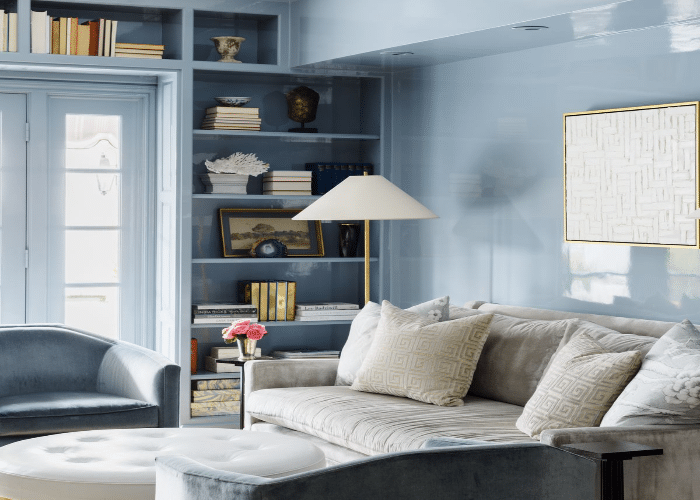
Blues seamlessly intertwine with organic and modern aspects of the space, resulting in a harmonious and inviting atmosphere. Blue hues evoke a sense of calmness and tranquility, bringing the outdoors to indoors and fostering a more holistic living experience. Lighter shades of blue enhance the perception of space, creating an illusion of openness and airiness. Blues are known for their stress-reducing and mindfulness qualities.
7. Accent Colors
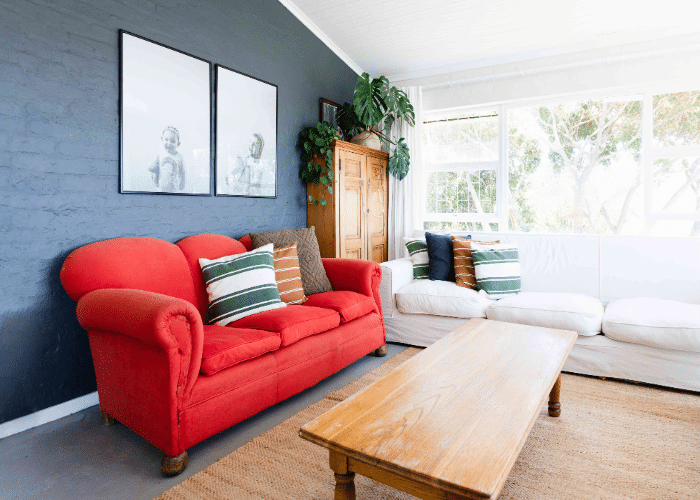
Accent colors are pivotal in creating a vibrant and balanced living room. Accent colors like burnt orange, olive green, deep teal, mustard yellow, rose gold, dusty pink, and soft lavender should be carefully distributed throughout the room to maintain a balanced look. Using too many accent colors might overwhelm the place; strategically place them to highlight the design elements and create visual interest. Vibrant colors like mustard yellow, deep teal, and navy blue create a welcoming look and add a pop of brightness to the space.
8. Complementary Colors
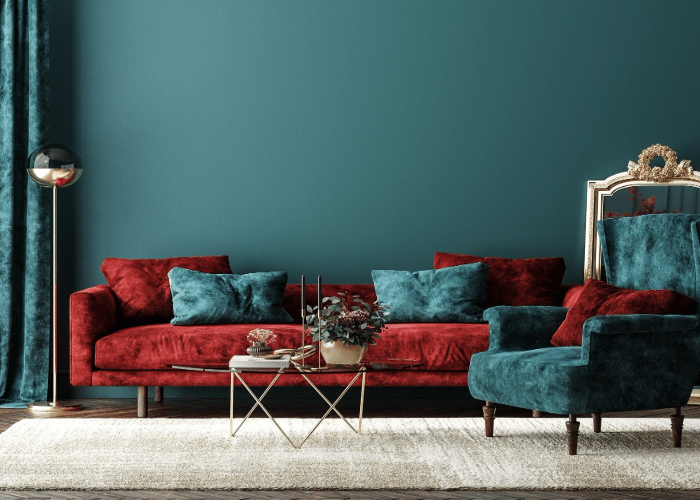
Complementary colors create visual interest and a dynamic contrast that elevates the space. These colors are situated opposite each other on the color wheel: blue and orange, red and green, etc., creating depth and natural contrast to the room. Combining complementary colors generates equilibrium and perfect harmony between natural and contemporary elements. Using contemporary colored accessories like accent pillows, artwork, or decorative pieces adds color without overpowering the theme.
Conclusion
Just as nature blends harmoniously with diverse elements, your chosen colors will create a space that has no bounds. From soothing blues to vibrant accent colors, bold colors to pastels, these colors capture the essence of your lifestyle.
We hope this blog helps you create an organic modern living room, which is a testament to your vision that reflects the beauty of both nature and the modern world. The neutral hues, cool blues, and pastels add a sense of serenity, and the accent colors and contemporary colors add a touch of creativity and vibrancy to the room.
No matter what color you choose, make sure you love those colors, and it reflects your style. Go ahead and paint your style!

